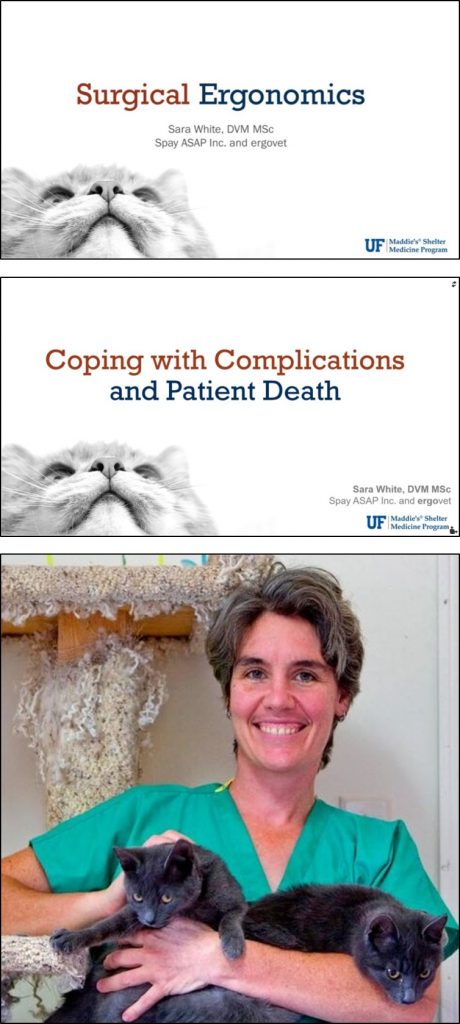Module 4: The Case of the Spay-Neuter Skeptic
Self-Care of the Spay/Neuter Surgeon
HQHVSN is demanding work. In addition to an obligation to their patients, the spay-neuter surgeon is responsible for their own physical and emotional care, as well as the care of their team. For some shelter veterinarians, performing spay-neuter procedures occupies much of the day. As such, it is important to recognize how ergonomics and repetitive motions can impact the surgeon’s physical well-being.
It is inevitable that adverse events will occur in the spay-neuter clinic, whether it be during anesthesia, the surgery itself, or post-operatively. How the surgeon copes with these stressful events may dramatically affect their career satisfaction.
Dr. Sara White has studied both the physical and emotional impact of spay-neuter practice. Her practical and evidence-based advice empowers veterinary surgeons to mitigate harm and build resilience, which can prolong their surgical careers.
Watch This

Learn about the physical and emotional risks of spay-neuter practice and steps to take to develop resilience and preserve a satisfying surgical career in these presentations:
Surgical Ergonomics (21 min, downloadable transcript)
Coping with Complications and Patient Death (12 min, downloadable transcript)
Dr. Sara White has worked in shelter medicine and HQHVSN throughout most of her career. Since 2006, she has operated Spay ASAP Inc, a nonprofit MASH-style mobile spay-neuter clinic, where she has spayed or neutered over 40,000 animals. While working in spay-neuter, Dr. White noted the work strain many colleagues experienced, which led her to develop an interest in ergonomics, health, well-being, and injury in veterinarians and staff. This led her to compete a Masters of Science in Health Ergonomics from University of Derby (UK) and a website addressing the well-being of spay-neuter surgeons. She has published research studies on this topic, including Prevalence and Risk Factors Associated with Musculoskeletal Discomfort in Spay and Neuter Veterinarians, Veterinarians’ Emotional Reactions and Coping Strategies for Adverse Events in Spay-Neuter Surgical Practice, and a new spay/neuter textbook High-Quality, High-Volume Spay and Neuter and Other Shelter Surgeries. Dr. White currently serves as President of the Vermont Veterinary Medical Association, and lives on a farm in Vermont with her wife Tina, 4 cats, a large fluffy dog, and two spoiled horses.
Think About It . . . One Health for Animals, People, and the Environment

